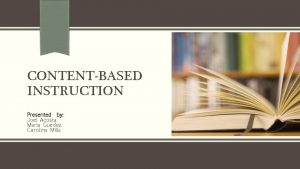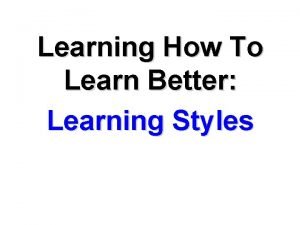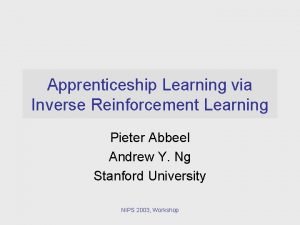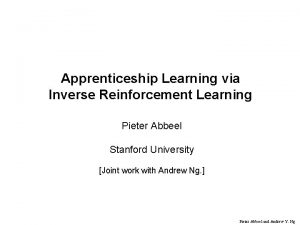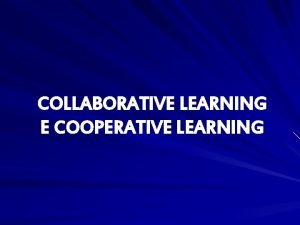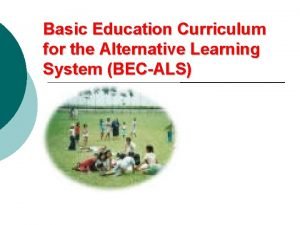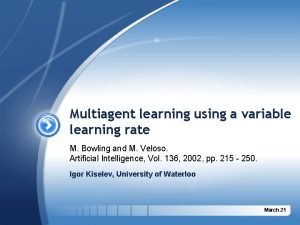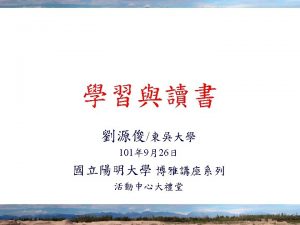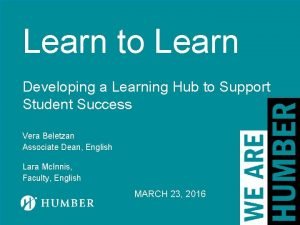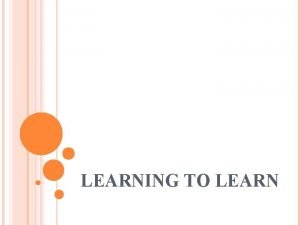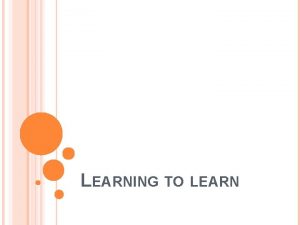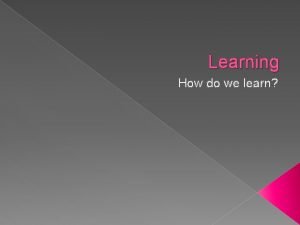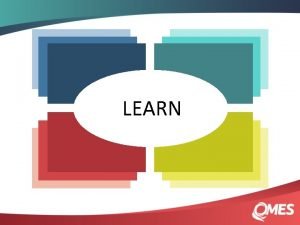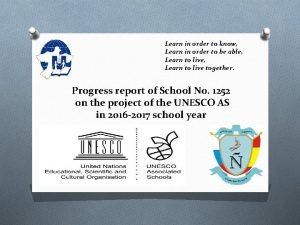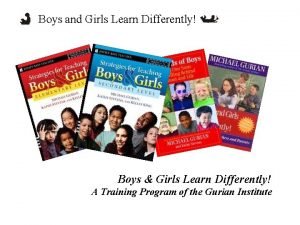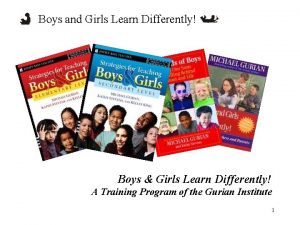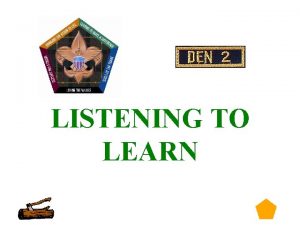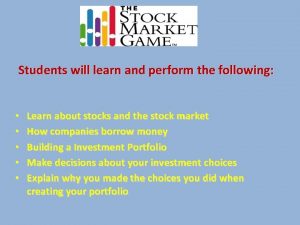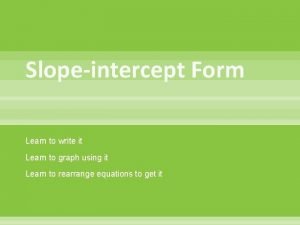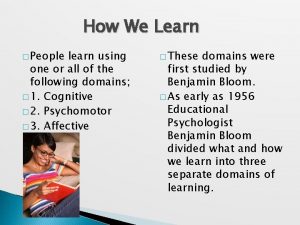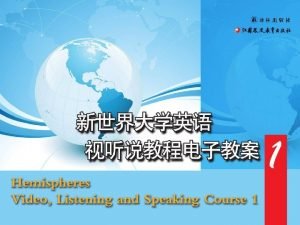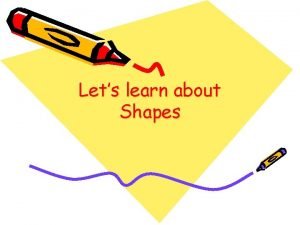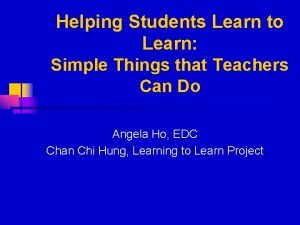Learning to learn What is learning to learn
























- Slides: 24

Learning to learn

What is learning to learn? Encouraging students to think about their learning Developing the students thinking skills

Learning to Learn skills

What the HDHS Teachers want • • • Life skills. Independent Take responsibility set own targets/have ambition. Good communicator. Team worker. Time managers Problem solving ability. Professional attitude and expectations, have high expectations. Understand which type of learner they are. Resilient. Confident. Social Skills

In your classroom… • What do you want?

Maths • Become fluent in the fundamentals of mathematics, including through varied and frequent practice with increasingly complex problems over time, so that pupils develop conceptual understanding and the ability to recall and apply knowledge rapidly and accurately. • �reason mathematically by following a line of enquiry, conjecturing relationships and generalisations, and developing an argument, justification or proof using mathematical language • �can solve problems by applying their mathematics to a variety of routine and non-routine problems with increasing sophistication, including breaking down problems into a series of simpler steps and persevering in seeking solutions.

Maths • Solve problems • �develop their mathematical knowledge, in part through solving problems and evaluating the outcomes, including multi-step problems • �develop their use of formal mathematical knowledge to interpret and solve problems, including in financial mathematics • �begin to model situations mathematically and express the results using a range of formal mathematical representations • �select appropriate concepts, methods and techniques to apply to unfamiliar and non-routine problems.

History • It should inspire pupils’ curiosity to know more about the past. Teaching should equip pupils to ask perceptive questions, think critically, weigh evidence, sift arguments, and develop perspective and judgement. History helps pupils to understand the complexity of people’s lives, the process of change, the diversity of societies and relationships between different groups, as well as their own identity and the challenges of their time.

History • Attainment targets • By the end of key stage 3, pupils are expected to know, apply and understand the matters, skills and processes specified in the programme of study.

Art • pupils progress, they should be able to think critically and develop a more rigorous understanding of art and design. They should also know how art and design both reflect and shape our history, and contribute to the culture, creativity and wealth of our nation.

Art • Key stage 3 • Pupils should be taught to develop their creativity and ideas, and increase proficiency in their execution. They should develop a critical understanding of artists, architects and designers, expressing reasoned judgements that can inform their own work. • Pupils should be taught: • �to use a range of techniques to record their observations in sketchbooks, journals and other media as a basis for exploring their ideas • �to use a range of techniques and media, including painting • �to increase their proficiency in the handling of different materials • �to analyse and evaluate their own work, and that of others, in order to strengthen the visual impact or applications of their work • �about the history of art, craft, design and architecture, including periods, styles and major movements from ancient times up to the present day.

What the government want… Problem Solving Apply knowledge Interpret information Recall and apply Ask perceptive questions Sift arguments develop perspective and judgements • Think critically • Develop creativity • • •

How do the two ideals compare/link?

The Ideal • Use same language across the curriculum in order to help students understand that they are developing the PLTS skills across the school

Team Worker • Team worker Mat

Team Worker • The four Cs • Clarity – everyone knows the main objective • Consideration - both of the ideas and other people’s viewpoints; curiosity • Curiosity - test ideas to the limit and don’t be afraid to ask questions • Compromise - always be open to allowing your idea to be built upon by others

Team Worker Define roles • Team Leader • Time Keeper • Lead designer • • • Lead writer • • • Resource Manager Lead Data Handler • Lead Spokes person Lead Researcher


Independent Enquirer • Independent Enquirer mat





Create an activity…
 Revision techniques for kinesthetic learners
Revision techniques for kinesthetic learners Cuadro comparativo e-learning y b-learning
Cuadro comparativo e-learning y b-learning Learning to learn
Learning to learn Learning how to learn
Learning how to learn Lda supervised or unsupervised
Lda supervised or unsupervised Concept learning task in machine learning
Concept learning task in machine learning Analytical learning in machine learning
Analytical learning in machine learning Associative learning example
Associative learning example Lazy learner and eager learner
Lazy learner and eager learner Deductive learning vs inductive learning
Deductive learning vs inductive learning Analytical learning vs inductive learning
Analytical learning vs inductive learning Apprenticeship learning via inverse reinforcement learning
Apprenticeship learning via inverse reinforcement learning Apprenticeship learning via inverse reinforcement learning
Apprenticeship learning via inverse reinforcement learning Deductive learning vs inductive learning
Deductive learning vs inductive learning Pac learning model in machine learning
Pac learning model in machine learning Contoh supervised learning
Contoh supervised learning Machine learning t mitchell
Machine learning t mitchell Inductive and analytical learning
Inductive and analytical learning Instance based learning in machine learning
Instance based learning in machine learning Inductive learning machine learning
Inductive learning machine learning First order rule learning in machine learning
First order rule learning in machine learning Collaborative learning vs cooperative learning
Collaborative learning vs cooperative learning Alternative learning system learning strands
Alternative learning system learning strands Active and passive learners
Active and passive learners Multiagent learning using a variable learning rate
Multiagent learning using a variable learning rate


